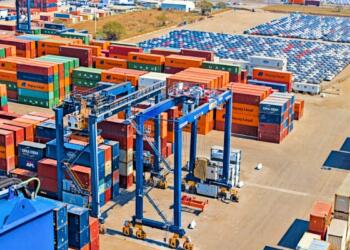
In the presentation of the report International Trade Outlook for Latin America and the Caribbean 2024: Reconfiguration of global trade and options for regional recovery , the Economic Commission for Latin America and the Caribbean (ECLAC) projected moderate growth in the region’s exports of goods, estimated at 4% for 2024.
This increase will be driven mainly by an expansion in export volumes , while prices will generally remain low.
The case of Mexico is notable in the projections, where a growth in the value of goods exports of 2% is expected, driven by the manufacturing sector, although with a performance slightly below the regional average.

In the case of the tourism sector , this clearly reflects its continued recovery after the strong impact it suffered due to the pandemic.

In this context, Mexico stands out for its location and its consolidated industrial infrastructure and its network of trade agreements that allow it to integrate competitively into global production processes.
They highlighted that Mexico already has strong development in sectors such as the automotive and electronics sectors , and could benefit even more from this trend of global political tensions, if it continues to implement productive development policies focused on innovation and public and private collaboration, thus ensuring its competitiveness in the new scenario of global trade.
“Mexico is ideally positioned to benefit from the ongoing reconfiguration of global value chains, given its strategic geography and vast network of trade agreements,” said José Manuel Salazar-Xirinachs, Executive Secretary of ECLAC.
Salazar-Xirinachs also commented that, despite these advances, the country faces challenges such as the diversification of its export markets, where more than 80% of its exports are destined for the United States .
Additionally, it was highlighted that by the end of 2024, South America will see the largest trade surpluses in goods, with Brazil, Argentina, Chile and Peru leading in this area.
In contrast, the Caribbean trade deficit is expected to narrow from $22 billion in 2023 to $13 billion in 2024, largely thanks to an increase in Guyana’s surplus.
In Central America , on the other hand , the trade deficit in goods will increase, from 46 billion dollars to 53 billion dollars. In terms of trade in services, Mexico will be the country that will experience the greatest reduction in its deficit, which will fall from 19 billion dollars to 5 billion dollars.
ECLAC also highlighted the importance of international trade in food supply, especially for countries that are highly dependent on imports.
For his part, Keiji Inoue, officer in charge of ECLAC’s International Trade and Integration Division, noted that international trade plays a crucial role in food security .
“This allows countries to access food that they cannot produce locally due to climatic or technological conditions,” Inoue said.
The report also included a series of key recommendations to strengthen trade in the region, such as the implementation of productive development policies based on a cluster approach and close collaboration between the public and private sectors.
He also stressed the importance of harmonising sanitary and phytosanitary regulations and improving food trade logistics .
Finally, the report’s presentation urged governments to improve the digital and linguistic skills of the population in order to take advantage of the potential of modern services, the global demand for which is growing.
Likewise, it was recommended to sign agreements to facilitate trade in digital services and attract foreign direct investment in this sector.
(Main photo source: ECLAC social media)
Comment and follow us on X: @karinaquintero / @GrupoT21















